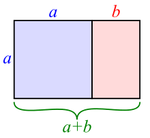Captain.Bonsai
Mame
What curriculum do you use to choose a forest pot?
Specifically, is there a standard ratio for pot-dimensions to tree-size (height and caliper)?
Other variables I’ve been considering are: number of trees, variety of tree size, preference for negative space, height of tallest vs shortest tree, near-view vs far view forest.
I remember reading that no single tree should be taller than the width of the pot. I can’t find where I read that, but it’s ringing a bell for me. I‘m skeptical about how universal that rule is.
Any text references would help too. I can’t find anything valuable about forest pot size selection.
Specifically, is there a standard ratio for pot-dimensions to tree-size (height and caliper)?
Other variables I’ve been considering are: number of trees, variety of tree size, preference for negative space, height of tallest vs shortest tree, near-view vs far view forest.
I remember reading that no single tree should be taller than the width of the pot. I can’t find where I read that, but it’s ringing a bell for me. I‘m skeptical about how universal that rule is.
Any text references would help too. I can’t find anything valuable about forest pot size selection.



